Best gaming motherboards in 2021
The best gaming motherboard may not feel like an important choice, but it's important to get right. A good motherboard will provide a foundation on which to design the rest of your dream rig, and will form a basis to power up your gaming experience. Choosing the best motherboard for your system determines case size, storage options, and how much of a CPU upgrade you can work up to.
Though there may not be a massive difference between motherboards packing the same chipset, there are several features aside from performance that matter just as much. Do you want to be able to overclock your CPU? Do you need high-performance RAM support? Do you need a small server's worth of USB ports? These are just some of the things you should consider when getting ready to purchase a motherboard.
The best gaming motherboards also give you some level of future-proofing, as much as this ever-changing world will allow. Whether that's in the form of a socket or chipset that can support the top-end processors, such as the Intel's Z590 chipset and its Rocket Lake chips, or one that can deliver next-gen interconnects, such as the B550's PCIe 4.0 support.
We've tested a bunch of both AMD and Intel motherboards over the past year, from Mini-ITX to ATX, so you can make an informed decision on which one is going to work best for you.
Best gaming motherboard
Best Intel Z590 motherboard

This is a gaming motherboard positioned as an entry-level option for anyone looking to run Rocket Lake. Asus has always positioned its TUF products as reliable options, with decent pricing and a more basic feature set. Combined it means this is a good affordable option for someone after a no-fuss, solid, and reliable system. And given the pricing of many Z590 motherboards, that makes for a welcome change.
The TUF Z590 Plus features a subtle design with a particularly nice white font. You get a couple of little splashes of RGB around the right side too. It’s a nice look. There are three M.2 slots with the topmost one supporting PCIe 4.0. The two at the bottom are contained under a single heatsink. Also, note the vertical SATA ports that sticklers for cable management might find objectionable. There are a further two regular horizontal ports adjacent to the heatsink. You get six fan headers and two addressable RGB headers too.
This is a board for anyone who would prefer to allocate money towards a faster GPU or larger SSD instead of paying through the nose for 10G LAN or expensive add-in cards. And I can totally get on board with that. Bang for buck and the true essentials are the name of the game here. If you’re on a budget, it’s definitely one to look out for.
Read the full Asus TUF Gaming Z590-Plus WIFI review.
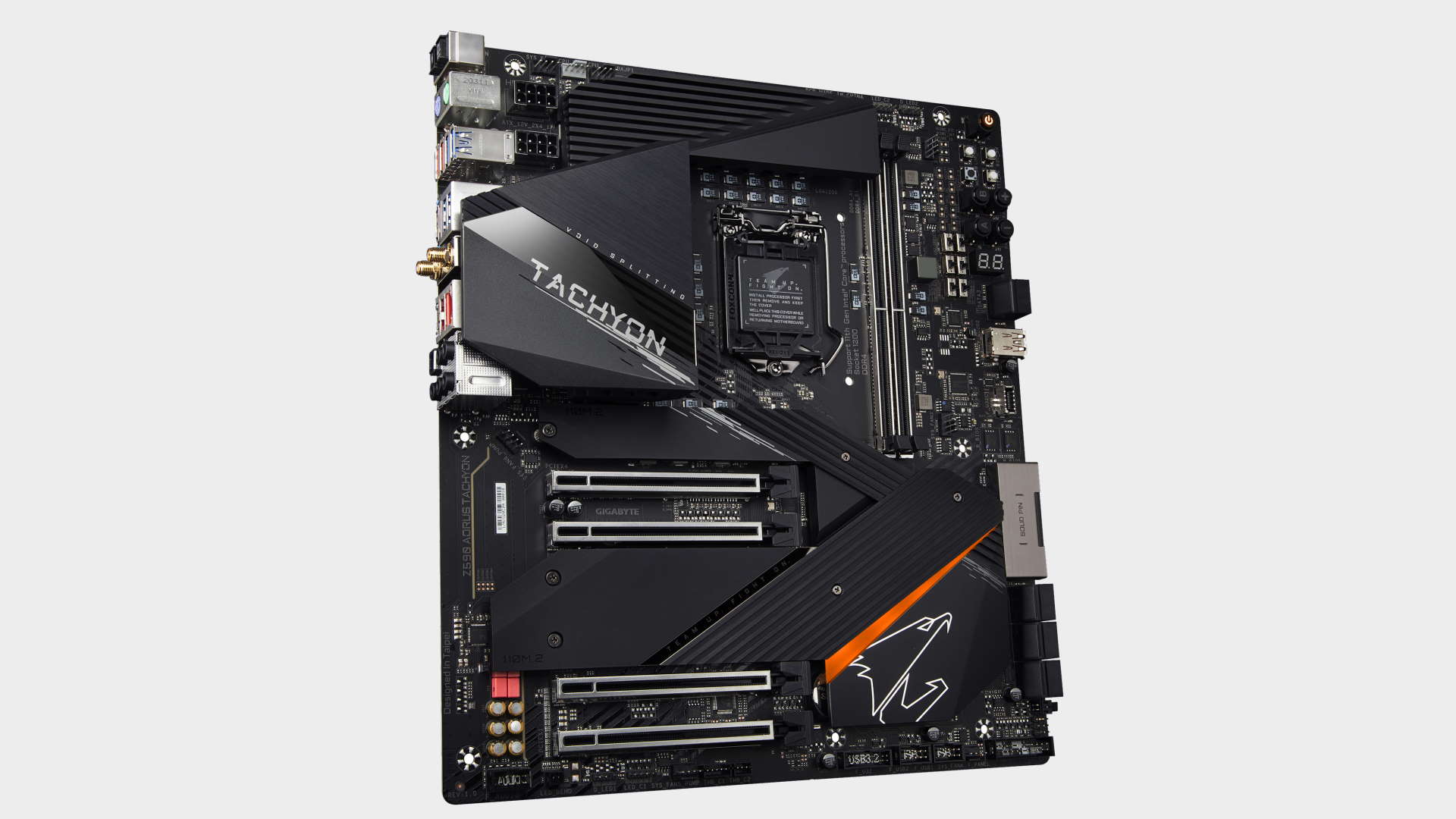
Overclocking focused motherboards have made a proper comeback. This time around all the major manufacturers have Z590 boards specifically designed for serious overclocking. The dual memory slot design, all those buttons and switches, a monstrous VRM, and a unique layout are all aimed at making life easier for overclockers. Then there’s a comprehensive BIOS with extensive tweaking options. It’s clear that this isn’t a regular board with a fancy sticker slapped on.
The idea behind having only two memory slots instead of four is to minimize trace complexity and bring the slots closer to the CPU. This helps reduce latency and allows for a little more performance headroom compared to a four-slot design. The primary PCIe slot is not the topmost one either, it’s the one below it. This is another choice to aid overclockers who use LN2 cool a GPU by allowing extra room for pots and insulation.
The Gigabyte Z590 Aorus Tachyon won’t magically add frequency to your CPU and memory. What it will do is help you to extract the maximum efficiency out of your system, no matter what cooling you’re using. An enthusiast who loves to tweak, spending time reducing latency and tweaking sub-timings, or a gamer dedicated to finding a few extra FPS will enjoy peace of mind knowing you’ve got a board that’s specifically designed to take whatever punishment you throw at it.
Read the full Gigabyte Z590 Aorus Tachyon review.
Best Intel Z490 motherboard
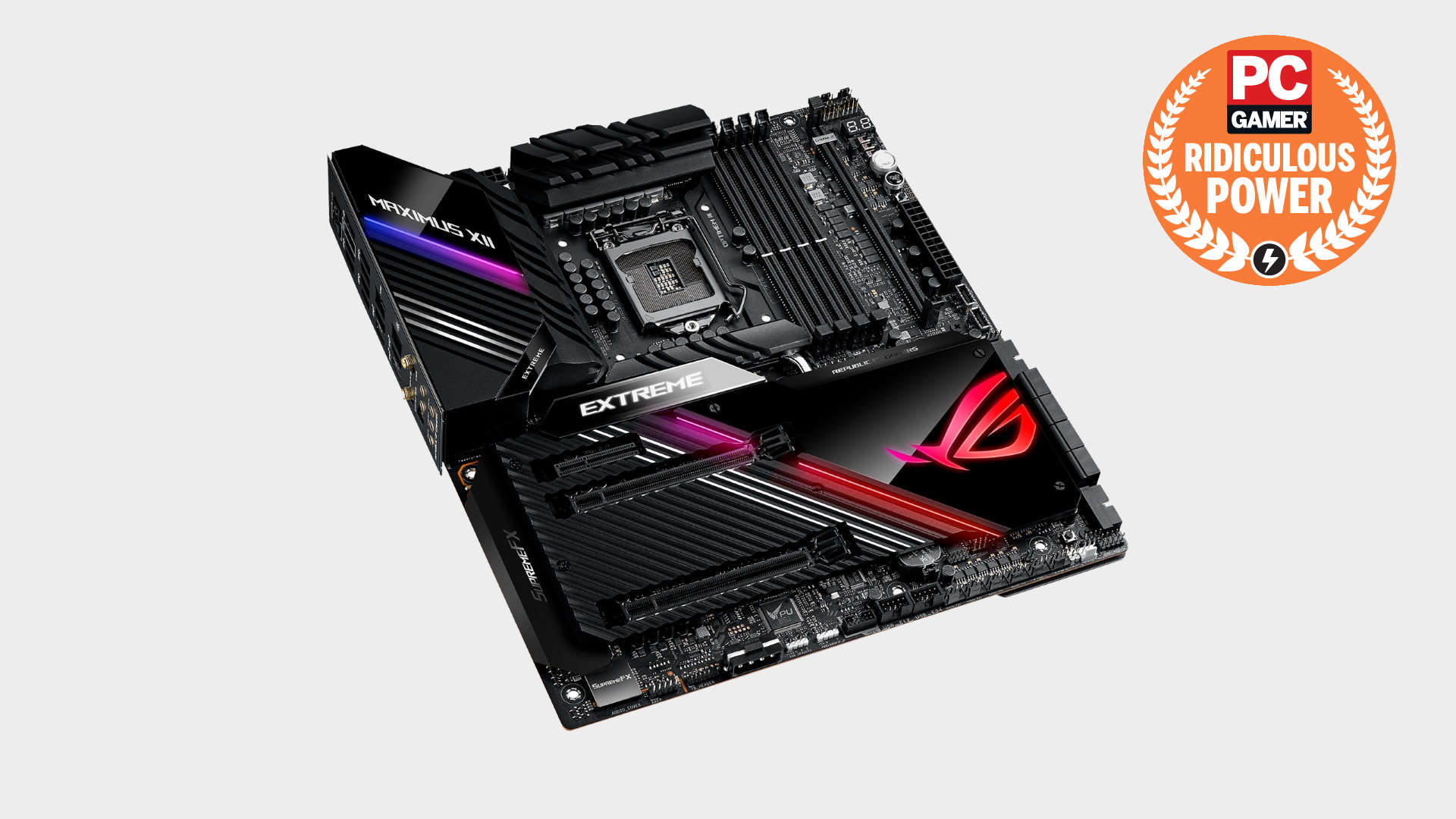
If you want the best, most fully-featured Intel Comet Lake motherboard, then I'm afraid you're going to have to pay for it. And pay through the nose if Asus' Z490 Maximus XII Extreme is anything to go by. It is, as the name suggests, extreme, packing in a variety of luxurious and convenient extras (a frickin' screwdriver with interchangeable heads for one), and it's also one of the highest performing Z490 boards we've tested.
But it only really makes sense if you're buying a K-series Core i9 and genuinely intend to overclock the nuts off it. The Maximus XII will allow you to get the highest clock speed out of your 10900K and won't turn it into a pile of molten slag while you're at it. The MSI Z490 Godlike is actually the fastest Z490 outright at stock speeds, but I'd rather have the ROG board in my camp if I'm going down the OC route.
Obviously, it's only for the very highest of high-end PC builds; however, the $750 price tag means you could actually build a respectable full gaming PC for the price of this single motherboard. It's an aspirational Z490 motherboard and arguably the best gaming motherboard for Comet Lake overclocking, but I'll concede it's not a particularly realistic purchase for most of us.
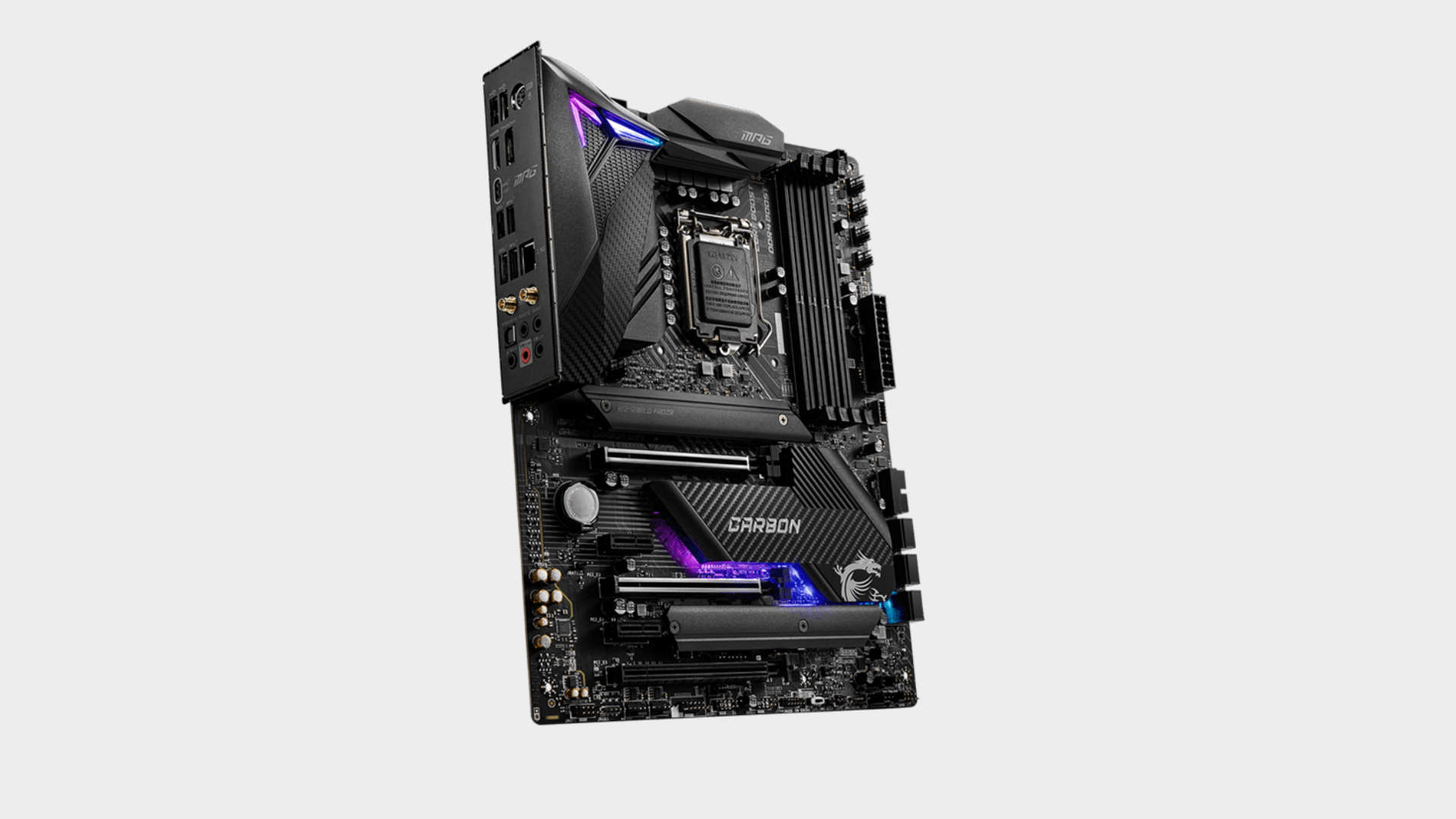
The sparse back panel and missing OLED displays will tell you we're back into normal motherboard territory with this MSI offering. The rarified air of the ultra-enthusiast ROG board up top might make one giddy, but the Z490 Gaming Carbon will bring us back down to earth without a bump. Sure, you're never going to get the same level of luxury feature list as you'll find with either the Maximus XII or MSI's own Godlike boards, but when it comes to the nuts and bolts of pure performance, it's right up there.
Where it matters, in the gaming performance stakes, there's practically nothing between any of the Z490 boards we've tested, and it's only ever a little behind when it comes to the actual CPU performance in productivity apps. However, when it comes to overclocking, the MPG Z490 Gaming Carbon WiFi inevitably can't compare to the big boys, with our 10900K running at its peak.
The power componentry and cooling aren't enough to stop the thirsty CPU from throttling when it's pushed to its 5.3GHz all-core maximum. But, while that might mean it's not the board you'd choose for an overclocked Core i9 machine, that's a tiny niche of gamers, and for either i5 or i7 CPUs, the MSI Gaming Carbon is still a quality home for your Comet Lake CPU.
Best Intel B460 motherboard
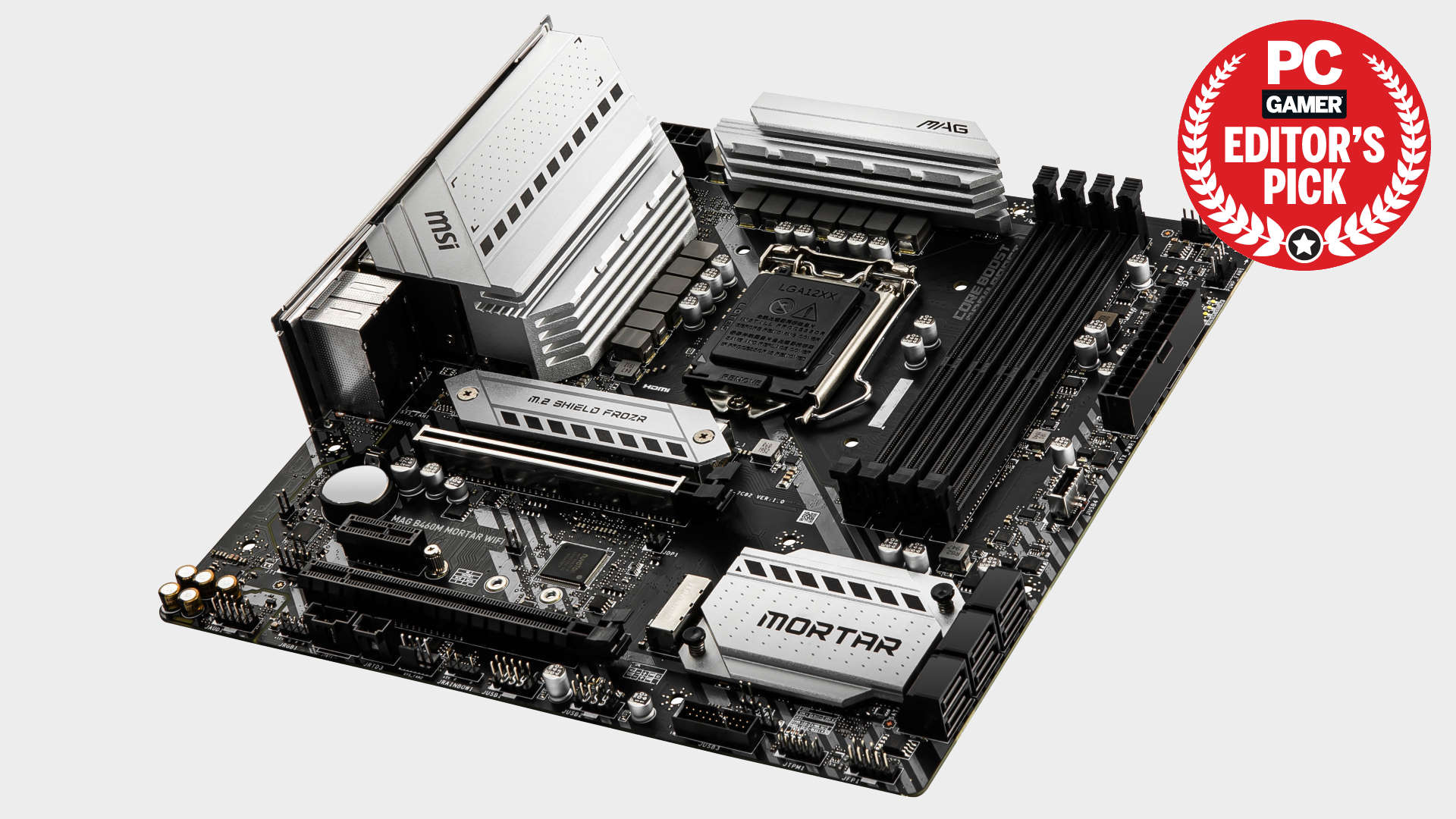
Grabbing one of the best Z490 motherboards might be appealing to your inner elitist, but the sticker price shock is definitely a problem. Sure, it would be nice to have 10Gb LAN, seven M.2 slots, or quad GPU support, but who really needs all that stuff? Most of us will be perfectly happy with a quality B460 motherboard, such as the MSI MAG B460M Mortar WiFi.
If you can put up with the memory speed limitation and have no intention of overclocking (well, with a K-series CPU anyway), then this is the kind of board that should be on your PC building wishlist. It ticks most of the important boxes, and at $125, it’s well priced, though the competition is tough with many premium B460 motherboards priced in this range.
It’s got a strong VRM configuration, 2.5Gb LAN, Wi-Fi 6, and adequate, if not particularly outstanding, I/O. Pairing it with a 65W non-K processor and having a crack at pseudo overclocking is definitely worth the minimal efforts too. If you can live with the maximum DDR4-2666 speed, something like an Intel Core i5 10600 and B460M Mortar, paired with a decent mid-range GPU, would deliver a quality, affordable gaming combo.
Read the full MSI MAG B460M Mortar WiFi review.
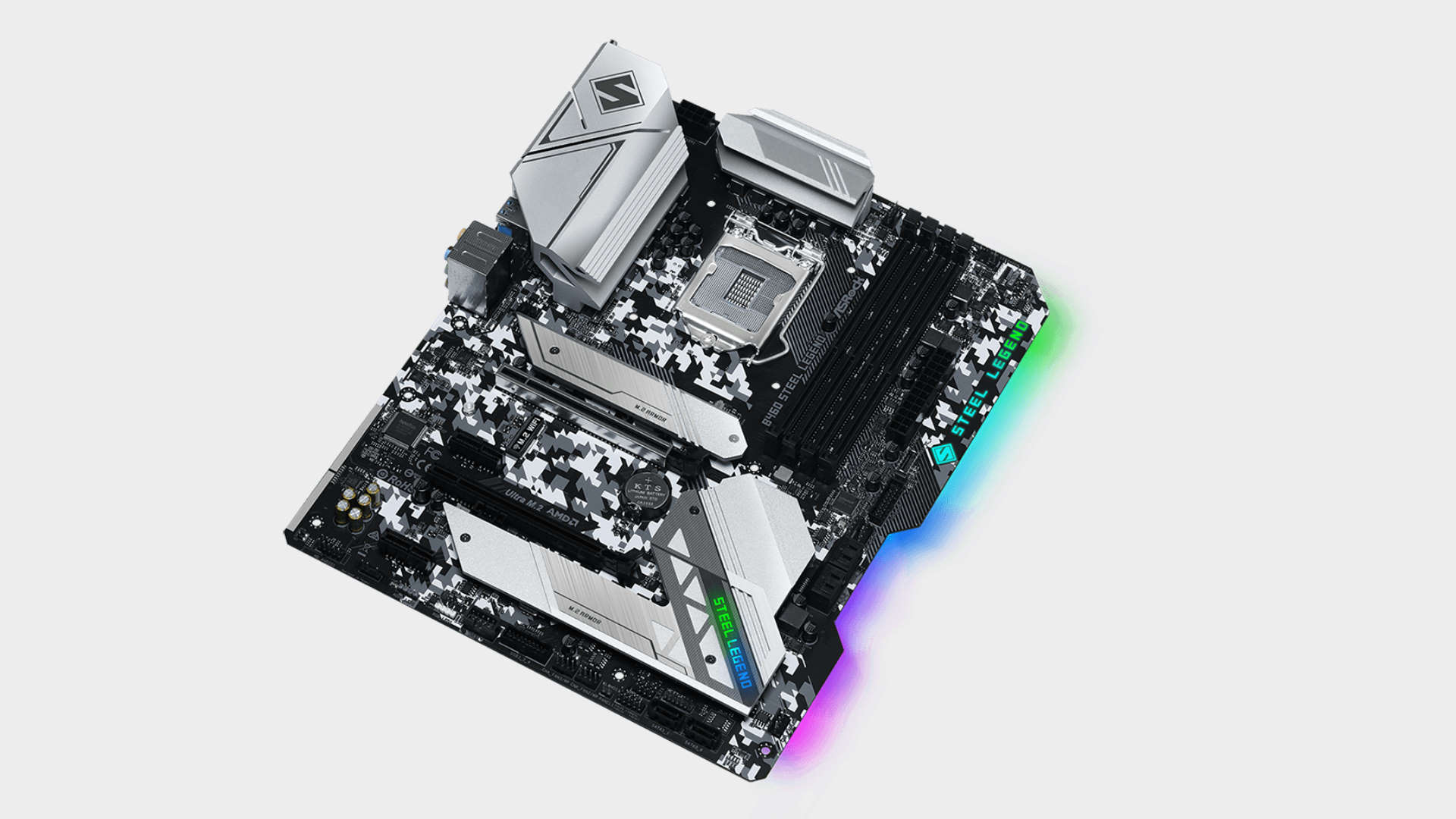
The ASRock B460 Steel Legend is an awesomely named mid-range B460 entry. At USD 120, it’s what we’d call a mid-range B460 board. A look over the specs indicates that your $120 is well spent on some important areas. You get a pair of heatsink-covered M.2 slots, an e-key M.2 slot for an optional Wi-Fi card, a front USB Type-C header, and a good helping of RGB onboard.
The increased power demands of 10th generation CPUs mean motherboards generally have to include improved VRM designs, and on that front, the B460 Steel Legend is well equipped. It includes a 9+1 phase VRM powered by a single 8-Pin EPS connector. Each stage can deliver up to 60A. Bear in mind that overclocking is not allowed on B460 motherboards, so the VRM will not see extreme loads as you might get with an all-core overclocked Intel Core i9 10900K.
The ASRock B460 Steel legend will appeal to buyers who aren’t so interested in bells and whistles but want a solid ATX board capable of powering any 10th Gen CPU without bursting into flames. Integrated Wi-Fi would have been a nice cherry on top for the price, and that's arguably one of the reasons we prefer the MSI B460M Mortar. But the ASRock B460 Steel legend is still a highly competitive offering and comes highly recommended by us. It shows its steel, one might say. If it had Wi-Fi, we might even have said it was legendary.
Read the full ASRock B460 Steel Legend review.
Best Intel Z390 motherboard
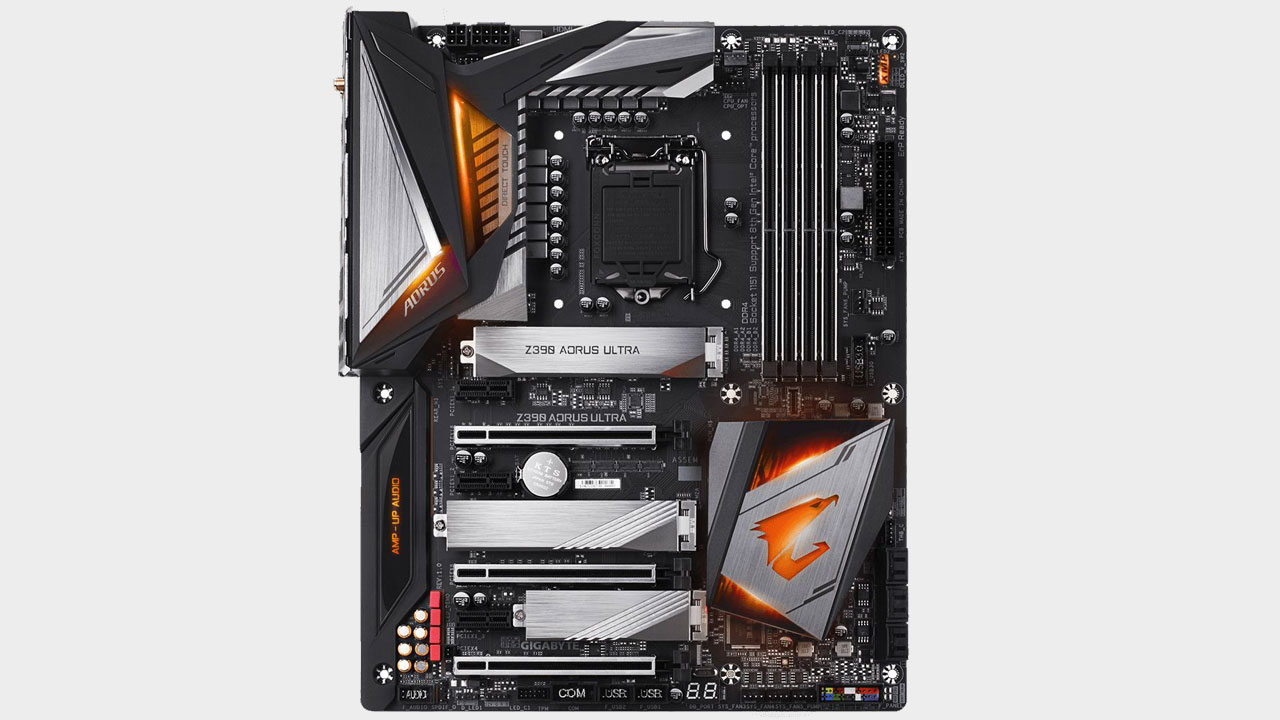
The Gigabyte Z390 Aorus Ultra competes with the MSI Z390 Gaming Pro Carbon AC and the Asus ROG Maximus XI Hero (Wi-Fi), lower price tag, and more features. It has triple M.2 slots for your super-speedy NVMe SSD needs, Intel Wi-Fi Wave2 and ethernet, a full RGB treatment with multiple headers, and ALC1220 audio. You'd have to climb right to the top of the product stack to get the same from MSI and ASUS, both of whom offer a little more polish but also charge plenty for the privilege. Though there's a lot to be said for extreme motherboards, this is a great value Intel board.
The only real downside for us is that this mobo is perhaps a little too flashy and may not suit more restrained gaming builds. Thankfully, you can disable all the RGB bling within the BIOS if you want, though other elements may still clash. But that's a small criticism of an otherwise top board.
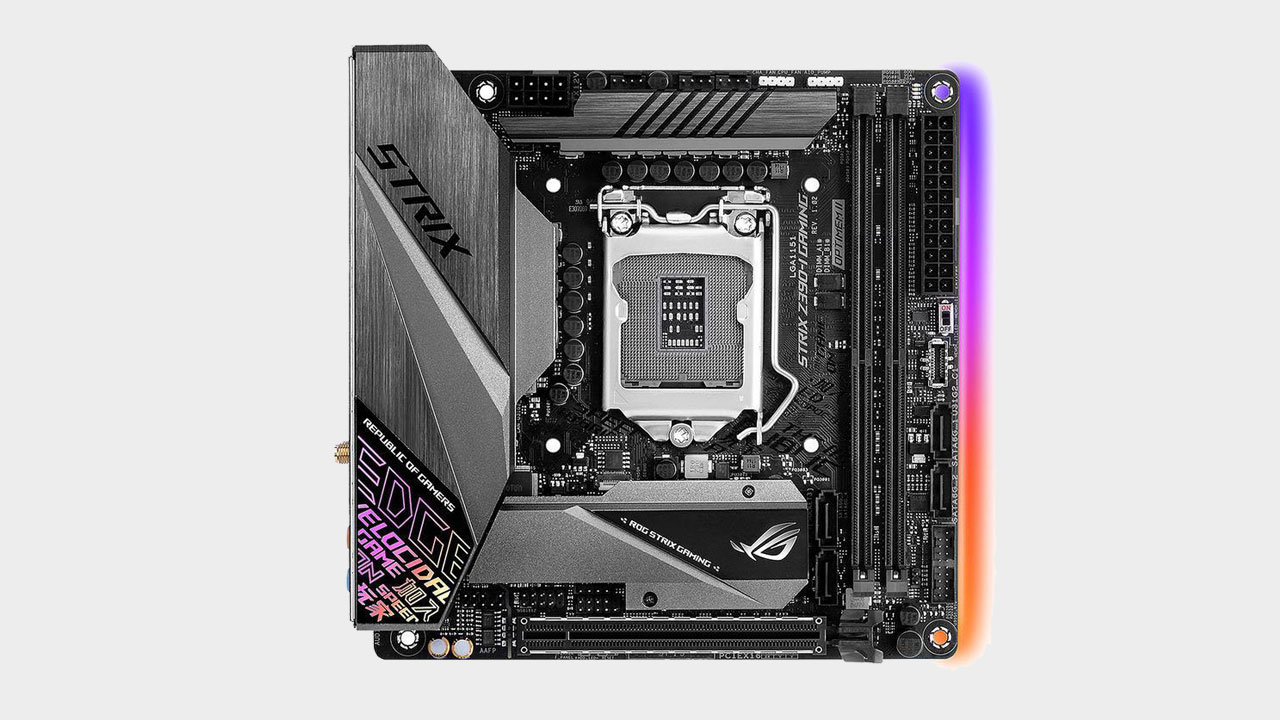
As the price drops and the previous Z370-based model disappears from vendors, ASUS's Strix Z390-I Gaming moves into the boutique ITX segment's top spot. Despite its diminutive size and paucity of upgrade options, the ROG Strix Z390-I Gaming provides excellent performance and value. Boasting stable 5GHz overclocks using several memory speeds, including 3,600MHz with tweaking, its single PCIe x16 slot pushed top-shelf graphics cards to speeds that matched or exceeded most Z390 ATX boards during testing.
The smallest Strix has a lengthy features list, with no shortcomings despite the tiny form factor, including dual PCIe Gen3 x4 M.2 slots, Intel v219 ethernet, upgraded Intel 9560 2x2 802.11ac Wi-Fi, and an ALC1220A audio codec supported by isolated circuitry and headphone amps. Despite the dense set of features, the Strix Z390-I's clean design makes quick system assembly and configuration an important consideration for ITX rig building.
It's worth noting that this board can be hard to find, but the previous generation ROG Strix Z370-I model, with its slimmer design, remains an excellent alternative, especially at clearance prices.
Best AMD X570 motherboard
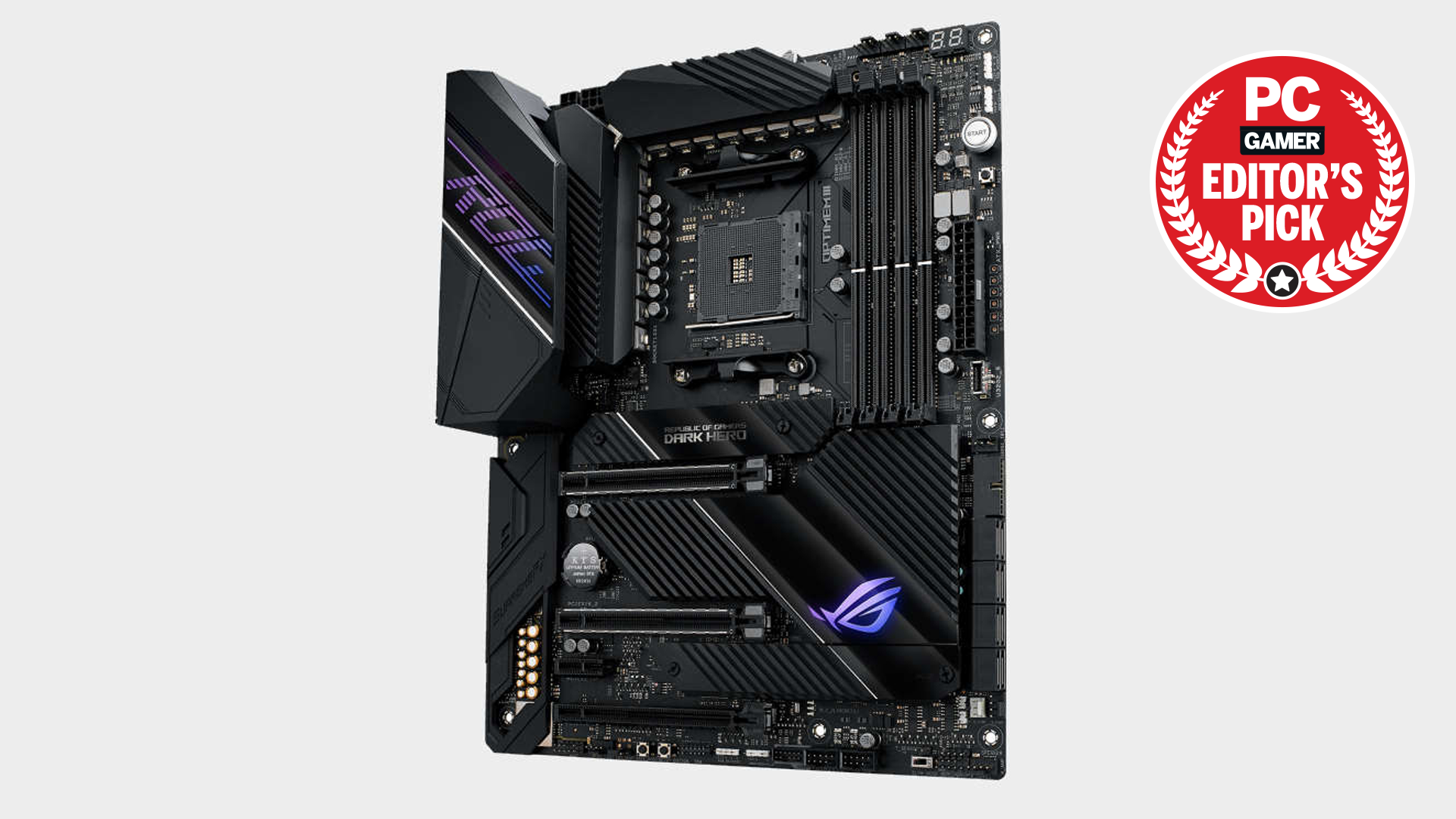
Asus' ROG Crosshair VIII Dark Hero wants to be the last AM4 motherboard you'll ever need. But what is it that makes a great motherboard? Features are important, as is a stable and refined BIOS, value for money, a good design, but sometimes intangible. Sometimes it's that the damn thing works.
Motherboard testing is often one of the most painful things a tech journalist has to do. With some boards, you have to fight it to get it to do what you want, or expect it to, or have to or crank up some voltage setting to a level you don’t really want to, but the Dark Hero just boots the first time, even as we played with the memory clocks and timings and the Infinity Fabric.
The Crosshair VIII Dark Hero might not be the best AM4 motherboard ever made, we’d have to review a few hundred others to make that claim, but it’s an easy claim to make that the Dark Hero is certainly one of the best AM4 motherboards we've ever used. Time and months of user feedback will determine if the Dark Hero assumes a position as one of the truly legendary ROG motherboards, but we wouldn’t bet against that happening.
Read the full Asus ROG Crosshair VIII Dark Hero review.
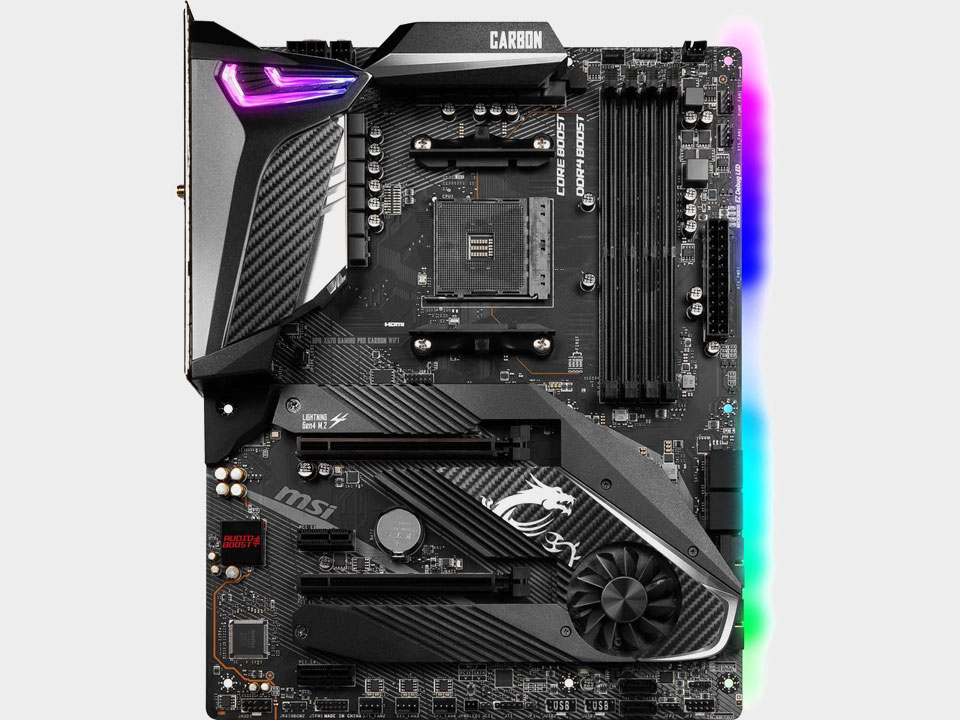
The MSI MPG X570 represents an amalgamation of bleeding-edge motherboard tech built to get the most out of AMD's 3rd gen Ryzen CPUs. It has four DIMM slots that can handle speeds up to 4,400Mhz and two M.2 slots sporting PCIe 4.0.
The rear I/O panel features seven USB Type-A ports for peripherals and a single USB Type-C port for connectivity and high-speed data transfer. There are headers for the included Wi-Fi antenna to help with wireless connectivity, as well as a gigabit ethernet port. The MPG X570 supports Wi-Fi 6, and while that does necessitate a Wi-Fi 6 compatible router, it's backward compatible with other Wi-Fi standards and gives the potential for a speed boost down the line. Also of note is the HDMI port, which many X570 boards omit (not that we'd really recommend using an AMD APU with integrated graphics in a high-end board like this).
The MPG X570 features enough compatibility to get the most out of your hardware now and in the future, provided you're willing to pay a premium for it. While it's certainly an excellent mobo, if you aren't already committed to a shopping list of top-of-the-line components now or shortly, you may want to consider a slightly less expensive board for your needs.

Despite the X570 chipset showing its age, Gigabyte's X570S Aorus Master feels like an old dog that's learned some new tricks. The fact that it comes with four M.2 slots alone is impressive along with decent heatsink. Really the cooling all around gets a thumbs up from us. The finned VRM heatsinks add a ton of surface area.
Our only real knock against the Aorus Master only offers single 2.5G LAN and lacks 5G which is a bit a bummer. That being said it's still one of the better AMD motherboards out there. I'm a sucker for a motherboard with a ton of USB ports this mobo has SO many.
The Aorus Master is still keeping AM4 and X570 relevant thanks to its many USB ports and storage options. Even at $400, it's got enough features (and looks good to boot) to justify the higher price point.
Read the full Gigabyte X570S Aorus Master review.
Best AMD B550 motherboard
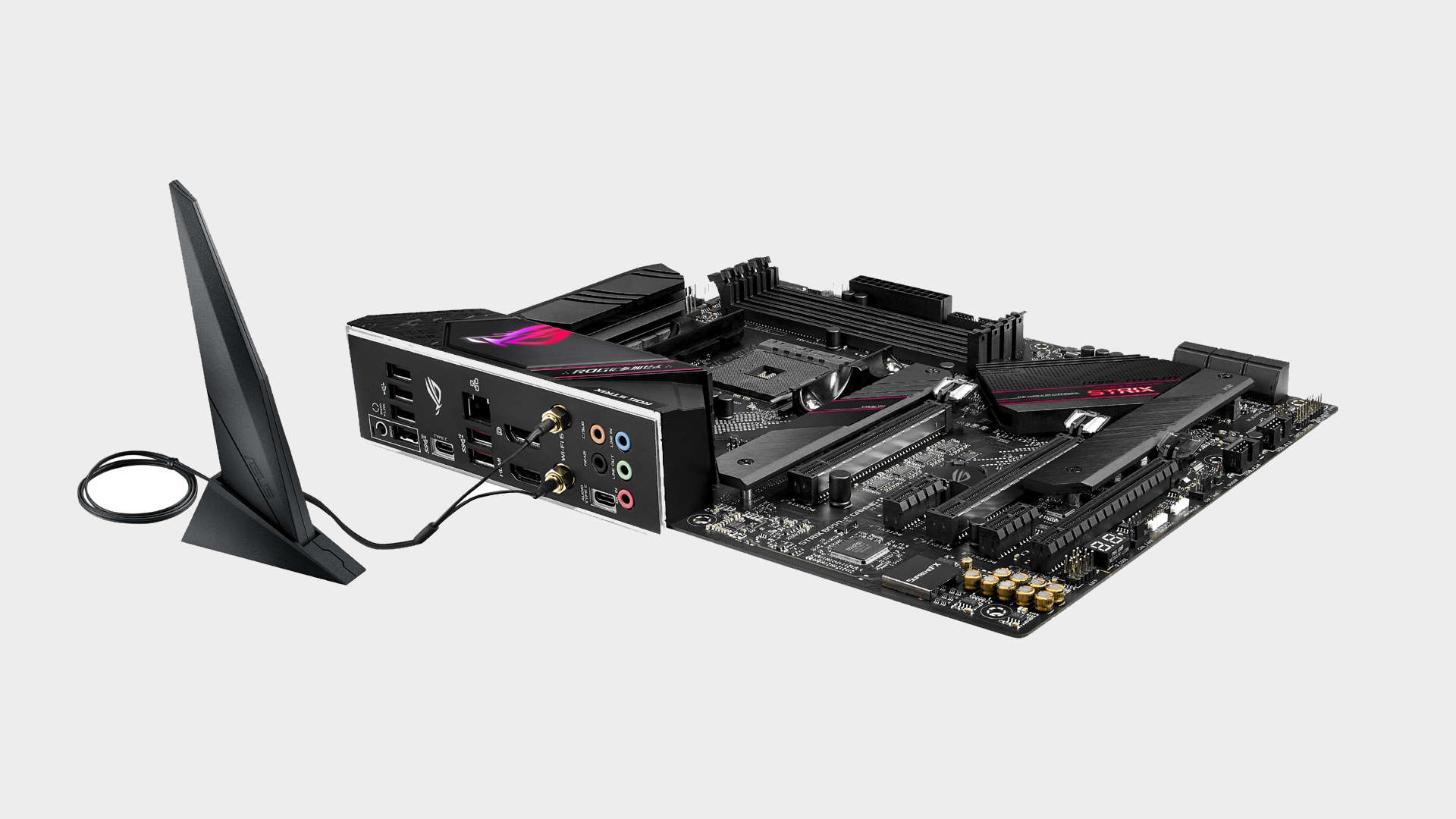
Sure, the Asus ROG Strix B550-E is the same price as other X570 motherboards; in fact, it pretty much matches our favorite of AMD's top-end boards, the MSI MPG X570 Gaming Pro Carbon. But it's a premium motherboard, with all the trappings you'd expect from Asus' Republic of Gamers stables, such as 14+2 power stage, M.2 heatsinks, and pre-installed backplates. You also get Wi-Fi 6 wireless networking as well as Intel 2.5Gb ethernet too. And RGB LEDs, of course. If you're looking at building a Zen 3 system, then the necessary BIOS updates should drop in January for this motherboard.
Performance is typically good for a high-end Asus board, matching X570 motherboards for gaming performance without issue. That said, of the B550 boards we've tested, it's the far more affordable MSI board that actually comes out top in our straight performance testing. But the Asus can overclock far better, even if it does chew up more raw power from the plug on the whole.
The Asus ROG Strix B550-E Gaming is the whole package then, and right now is our all-around pick for the best B550 motherboard. Though that still feels like a tough recommendation when X570 boards are the same price…
Read the full Asus ROG Strix B550-E Gaming review.
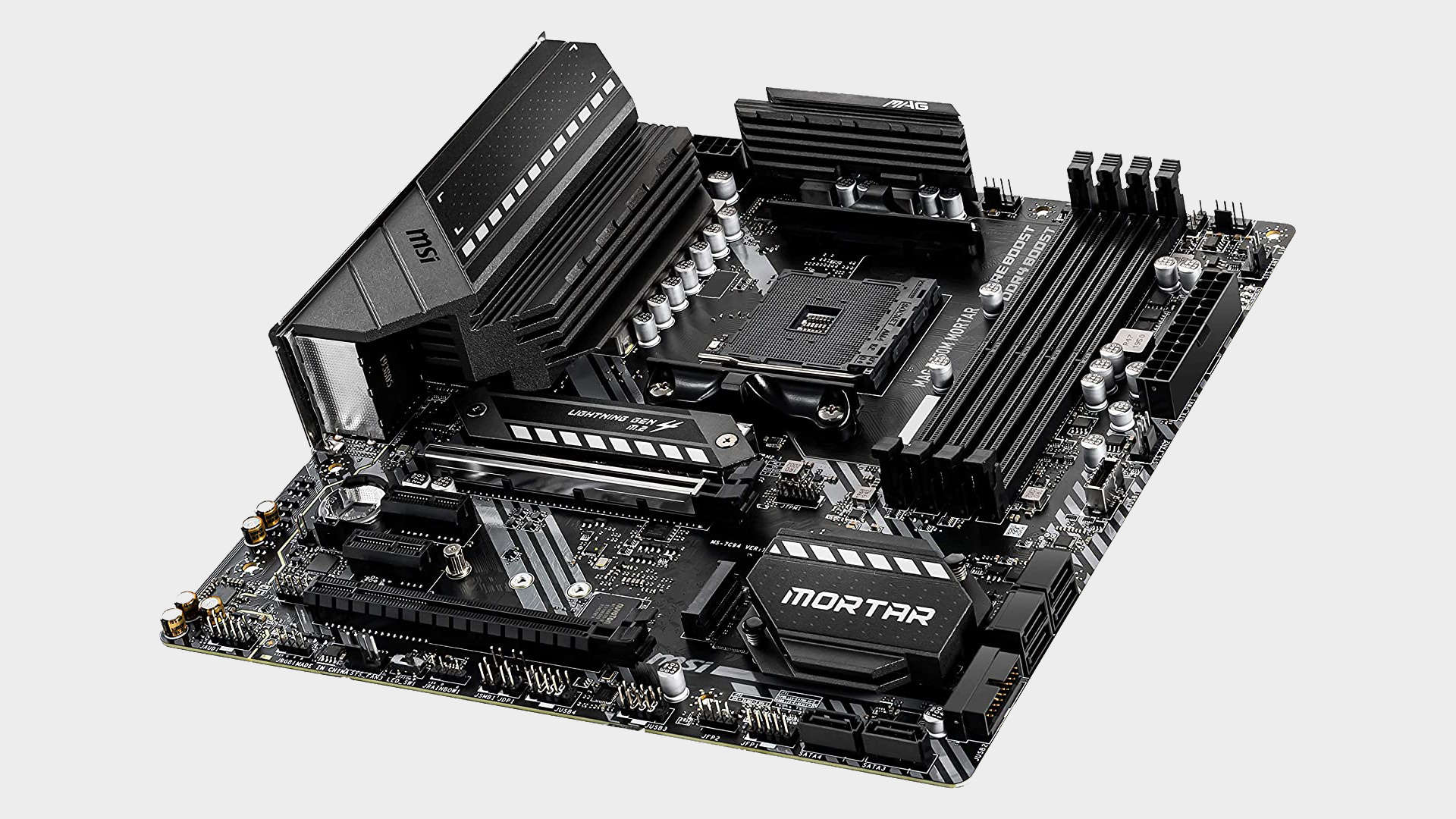
When it comes to gaming performance above all else, MSI's micro-ATX MAG B550M Mortar is your best bet for an affordable next-gen Ryzen machine. It comes in around the $160 mark, making it cheaper than a great many X570 and other B550 motherboards on the market right now.
The gaming frame rates of the MSI B550 Mortar put it above the rest of the B550 crew we've tested so far, and indeed its straight CPU performance puts it up there with some of the best X570s. That bodes well if you're looking for an affordable home for your AMD Zen 3 CPU of the future (BIOS updates to support Ryzen 5000 chips are due to start rolling out in January); this B550 has a great chance to ensure it performs to its fullest stock-clocked potential without breaking the bank.
But you will be missing out on extra PCIe 4.0 M.2 and x16 graphics slots if those extras mean a lot to you. You can also opt to ditch wireless networking, depending on whether you pick the straight Mortar or the more expensive Mortar Wi-Fi version. The 8+2+1 power phase design is arguably a more unwelcome miss, however, as that results in a board that will not spark any overclocking joy in your heart. But, as an affordable gaming board without OC pretensions, it's a great shout.
Read the full MSI MAG B550M Mortar review.
Best AMD A520 motherboard
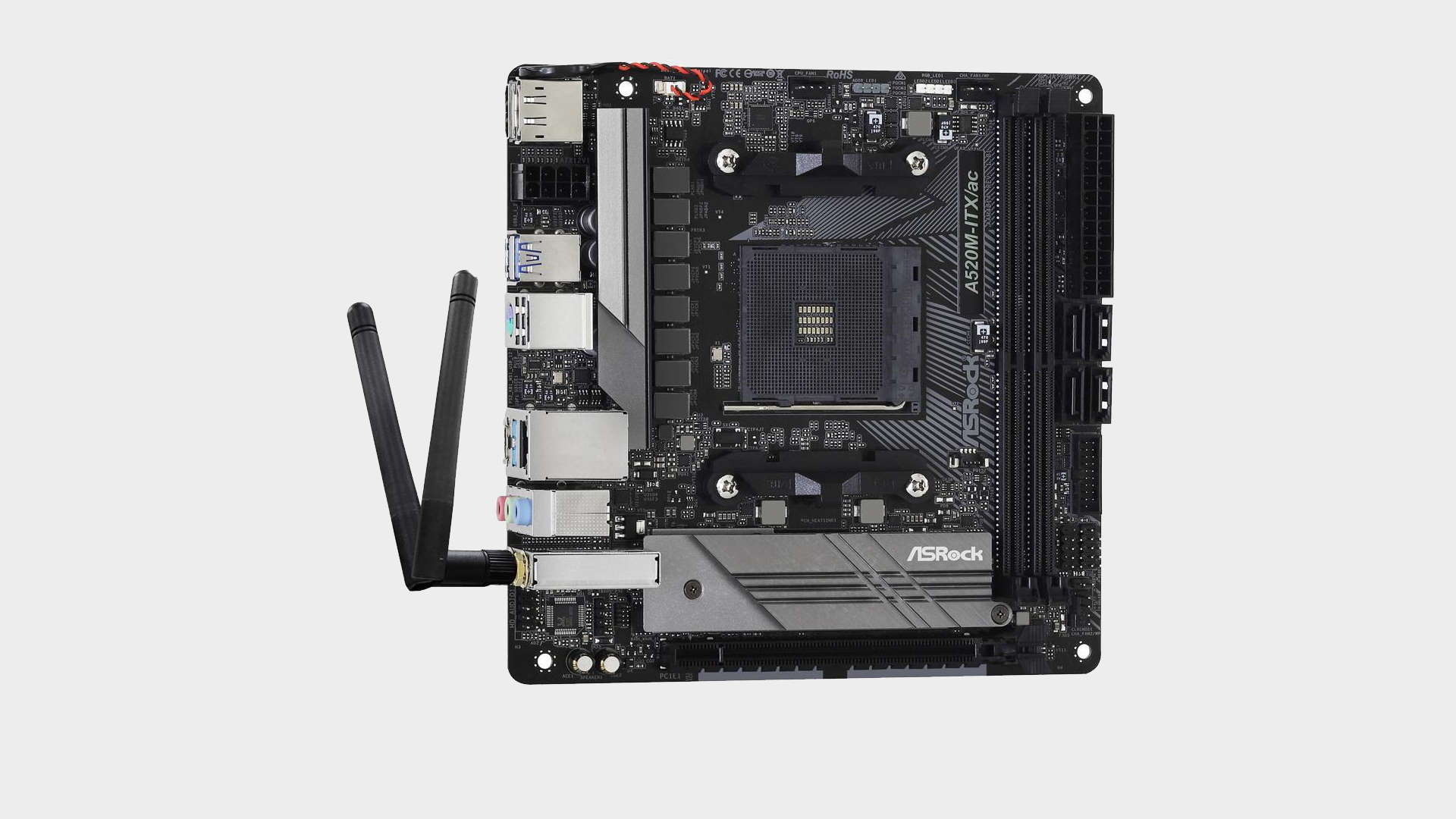
AMD's budget Ryzen motherboard chipset, the A520, has largely slipped under the radar. While B350 and B450 motherboards were mostly regarded as entry-level, A320 was strictly seen as the resolutely low end.
The introduction of B550 motherboards, and their associated move upward in price, left a big hole in the sub-$100 market. Enter A520. If you’re on a tighter budget and don’t care about PCIe 4.0 or the overclocking support offered by B550, then the A520 motherboards might be exactly what you need. There’s cheap, and there’s really cheap, but a decent A520 board can more or less do everything aboard at double the price can.
Then there’s the cherry on top, which supports AMD Ryzen 5000 series CPUs and, almost as importantly, Ryzen 4000 series APUs. Combine a Zen 3 CPU with a motherboard such as this ASRock A520M ITX/ac, and you’ll be able to build an affordable and compact system that can beat any Intel chip in any workload.
The ASRock A520M's audio is a bit of a letdown, but that’s something that budget boards often compromise on. A gamer listening to compressed audio assets in-game probably won’t be any less immersed. The little ASRock A520M ITX/ac has it where it counts and will serve you well at the heart of a budget gaming system. It benefits from the strengths of the Ryzen platform and adds some future-proofing into the mix. ITX fans looking for a capable budget AMD Ryzen option should definitely have this one on their shortlist.
Read the full ASRock A520M ITX/ac review.
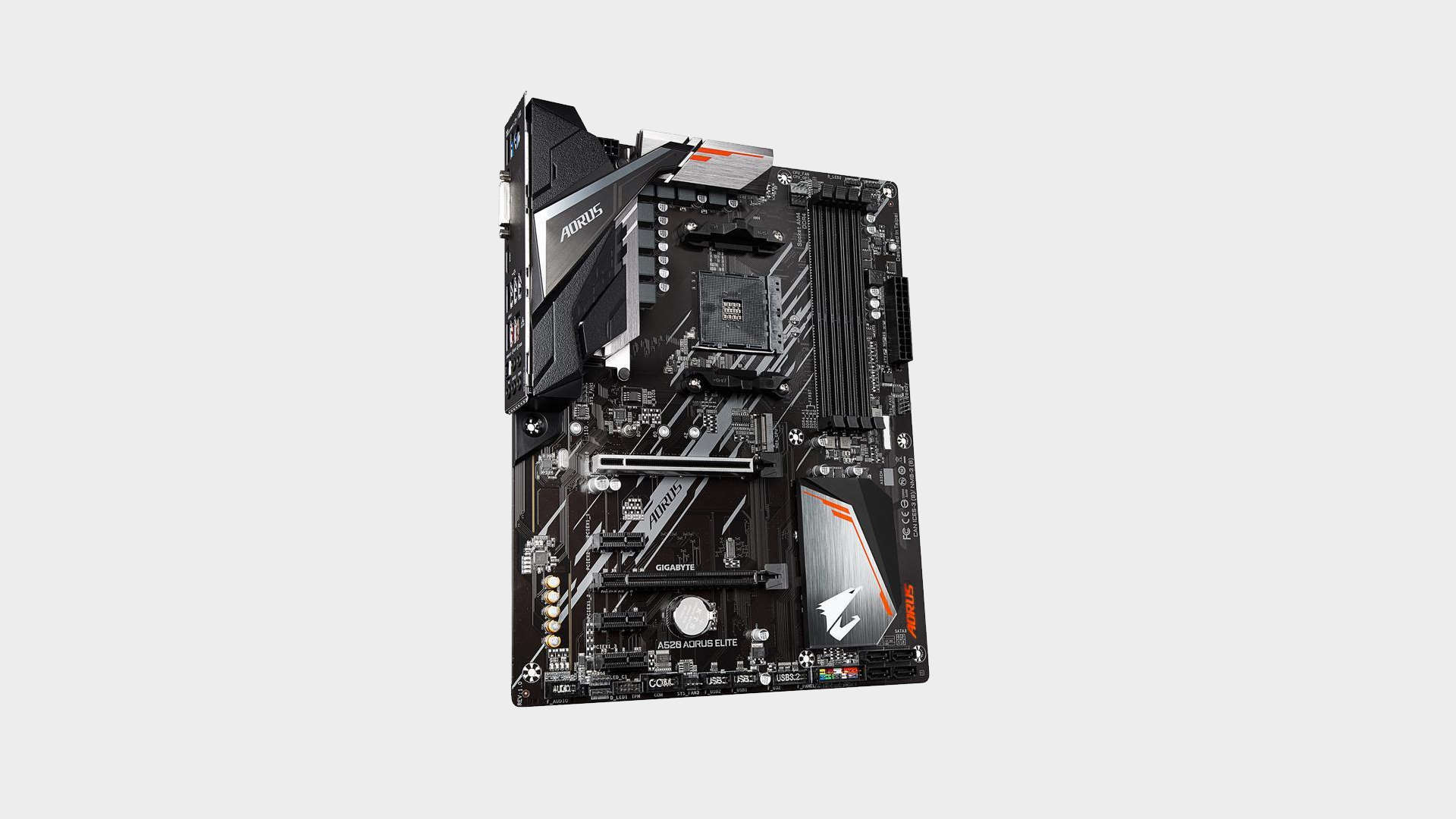
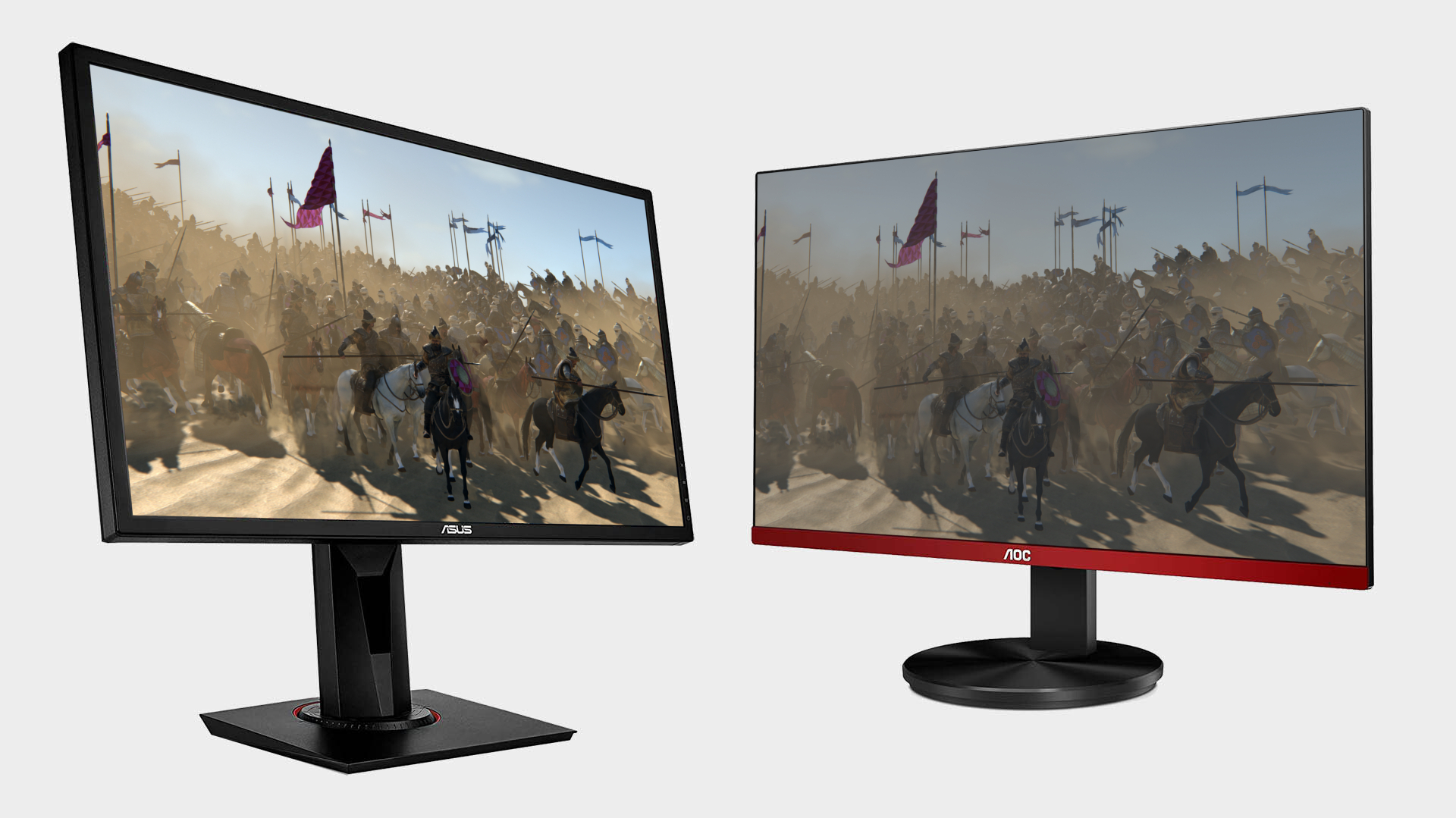
Best gaming monitor: pixel-perfect panels for your PC
Best 4K monitor for gaming: when only high-res will do
Best 4K TV for gaming: big-screen 4K PC gaming
AMD's A520 motherboard chipset might not make for the sexiest of PC components, that’s for sure. You probably wouldn’t buy one to take place at the heart of your water-cooled build or Nvidia RTX 3090 gaming system. When you look at the chipset itself, it doesn’t really miss out in terms of real-world essential features. There’s no PCIe 4.0, but no Intel systems have it either, not until Rocket Lake next year.
The Gigabyte A520 Aorus Elite is a high-end A520 board, which might seem oxymoronic, but if you didn’t know what it was, you’d be forgiven for assuming it was more of a mid-range board and not a $90 bargain. It’s even got two RGB headers and a further two ARGB headers. About the only thing it really lacks is Wi-Fi, but then do you really expect to have Wi-Fi at this price?
Gigabyte deserves credit for including audio built around the ALC1200 codec. Usually, this is reserved for use with more expensive motherboards. If you’re on a budget, this Gigabyte A520 Aorus Elite is well worth a look. It leaves Intel's budget B460 boards looking weak in comparison, plus you get the benefit of next-generation Ryzen compatibility. Is it for everyone? No, but the Gigabyte A520 Aorus Elite, unlike almost all preceding A320 boards, definitely does not mean cheap and nasty.
Read the full Gigabyte A520 Aorus Elite review.
Gaming motherboard FAQ
What's the most important factor in buying a motherboard?
You need to know which processor you want to be building your new rig around. Are you firmly tying yourself to the mast of the good ship Intel as it plows on through the roughest waters it's known? Or are you going to fly the flag of AMD proudly? Given the AMD Ryzen 5000 CPUs' performance, I know where I'd be putting my money.
What really matters when buying a motherboard?
Other than knowing which processor you're going to be fitting, size matters when picking up a motherboard. If you're building out a standard ATX scale gaming PC, then pretty much any motherboard is open to your whims, but if you want to go for a smaller chassis, either Micro ATX or Mini ITX, then you'll need a corresponding mobo.
That doesn't necessarily mean sacrificing performance or key features anymore. A single PCIe slot is more than enough for today's SLI/CrossFire-less GPU world, and even some Mini ITX boards will come with multiple M.2 SSD slots.
The scale will impact pricing, however. Interestingly Micro ATX boards are often the most affordable, while Mini ITX options can be the most expensive. We've picked our top two favorite gaming motherboards for each of the main Intel and AMD chipsets to give you the best options around.
Can I overclock on any motherboard?
No. There are absolutely restrictions in place to stop that, especially on the Intel side. It has opened up memory overclocking across its 500-series chipsets, but still, the Z590 is your only chance of overclocking the latest Rocket Lake K-series CPUs. But don't worry, they don't overclock very well.
AMD is more generous, allowing all its CPUs and most of its motherboard chipsets. Basically, if you make sure not to go for the cheapest Ryzen board, one with an 'A' at the front of its nomenclature, then you're good to tweak. Though again, there really are limited returns.
Jargon buster - motherboard terminology
ATX, Micro-ATX, Mini-ITX
The most common form factors/sizes of a motherboard from largest to smallest, which beyond physical dimensions determines which cases it'll fit into and (broadly) how many expansion slots are available. There are other, less common form factors (XL-ATX, HPTX, etc.), but these three are the most ubiquitous consumer form factors.
USB Header
A connector on the motherboard that allows you to run a cable to the case to add additional USB ports, typically on the front panel (though some cases provide top or rear panel slots as well).
BIOS/UEFI
Basic Input/Output System/Unified Extensible Firmware Interface connects the hardware and software that lives on the board (the firmware) to the operating system (OS, such as Windows or Linux). They allow you to adjust system-level settings, such as fan speed or RAM frequency. UEFI has largely replaced the older BIOS standard.
Expansion Slots (PCIe Slots)
Peripheral Component Interconnect Express slots on the motherboard are designed to accommodate add-in cards like graphics cards, SSD cards, dedicated sound cards, etc. PCIe slots are measured in both length (x16, x8, x4, x1) as well as by the number of data transmission lanes they provide (x16, x8, x4, x1). It's possible for an x16 slot to only provide 8 lanes of data, for instance, which means the maximum possible data transfer rate is halved (though in many cases, because PCIe provides such a high ceiling for transfer speeds, a lower number of lanes doesn't make a tremendous difference).
DIMM Slots
Dual In-Line Memory Module slots, the slots on a motherboard where your RAM lives. The number of total slots contributes to the maximum amount of RAM your system can handle, paired with the chipset and OS.
Chipset
The logic allows the various parts of a motherboard to talk to each other. The chipset determines which processor generations a motherboard is compatible with and what add-in cards can be used.
SATA Ports
Serial Advanced Technology Attachment ports, an interface for connecting storage devices/drives to a motherboard (HDDs, SSDs, optical drives, etc.). The number of physical ports on your board, combined with ports for NVMe storage, will determine the total number of storage drives you can have connected to your PC at any time.

Post a Comment